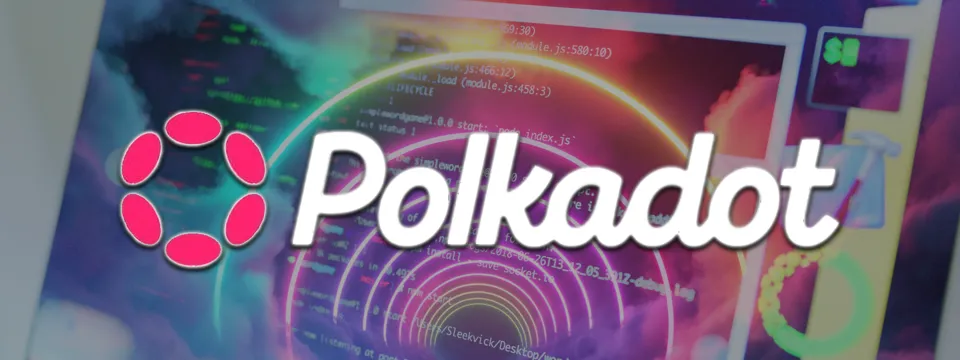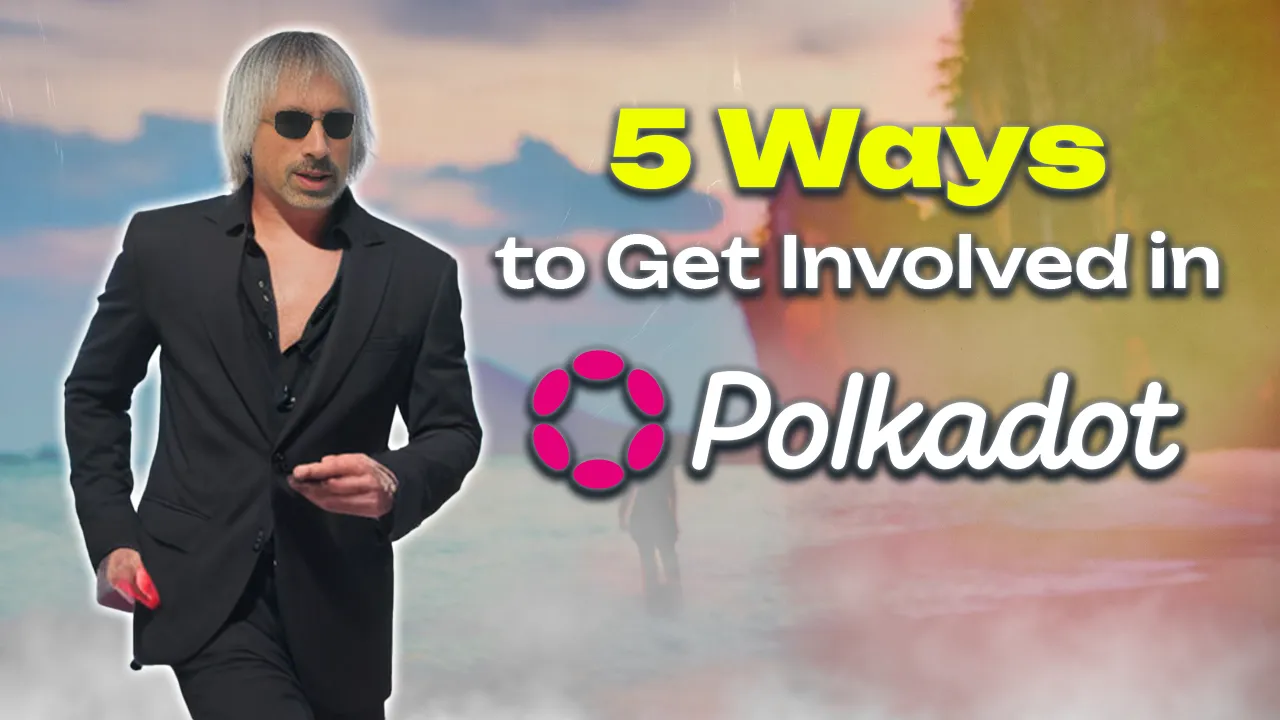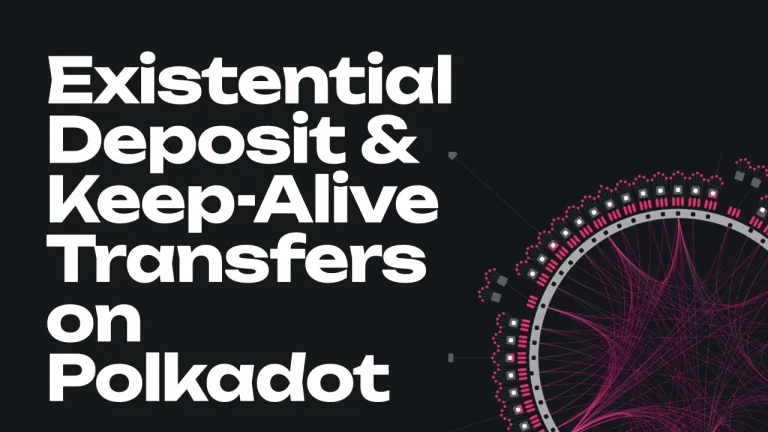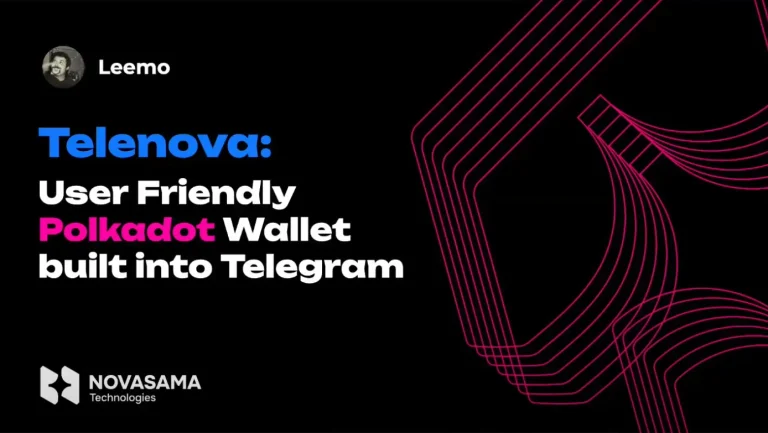Polkadot is one of the most innovative and rapidly evolving ecosystems in the blockchain space. As the premier multichain network, Polkadot allows for seamless interoperability, scalability, and security among different blockchains, known as parachains. Whether you are an investor, developer, or enthusiast, getting involved in Polkadot can be a transformative experience. This article will explore five ways to actively engage with Polkadot, helping you to navigate and contribute to this groundbreaking ecosystem.
1. Participate in Polkadot Governance
Governance is a cornerstone of the Polkadot network, enabling participants to have a direct influence on the future of the protocol. Unlike traditional blockchains, Polkadot’s governance model is highly decentralized, giving token holders the power to propose and vote on changes.
Why Governance Matters
Polkadot’s governance framework is designed to evolve the network without hard forks, ensuring continuity and stability. This dynamic system includes various components such as the Council (removed), the Technical Committee (replaced by the Polkadot Technical Fellowship), and the current OpenGov framework. With the Polkadot OpenGov mechanichs, stakeholders and all ecosystem entities work together to propose, deliberate, and implement changes.
How to Get Involved in Polkadot OpenGov
To participate in Polkadot’s governance, you must hold DOT, the native token of the network. The more DOT you hold, the greater your influence on proposals. Here are the steps to get started:
- Acquire DOT: Purchase DOT tokens from a reputable exchange and transfer them to you own custodial wallet. Or use platforms like snowbridge to bring your tokens from Ethereum.
- Bond Your DOT: By bonding your DOT, you can participate in voting and propose referenda. This process locks your tokens for a specific period, ensuring your commitment to the network’s decisions.
- Participate in OpenGov: OpenGov is Polkadot’s new governance framework, allowing any DOT holder to submit proposals or vote on them directly. This system replaces the previous governance model and aims to make decision-making more accessible and transparent.
By engaging in governance, you not only influence the direction of Polkadot but also gain a deeper understanding of the ecosystem’s intricacies. In this post you can learn more about the Polkadot OpenGov tracks and its different implications.

2. Develop on Polkadot
For developers, Polkadot offers a rich and versatile environment to create decentralized applications (dApps), parachains, and other blockchain-based solutions. Polkadot’s Substrate framework simplifies the development process, allowing for custom blockchain creation with ease.
Getting Started with Substrate and Polkadot SDK
Substrate is a modular framework that allows developers to build their own blockchains tailored to specific needs. It’s the foundation upon which Polkadot itself is built and is rapidly becoming the go-to choice for blockchain development.
- Learn Rust: Substrate is written in Rust, a powerful and efficient programming language. To develop on Substrate, it’s essential to have a good grasp of Rust. Numerous online resources, including the official Rust documentation and community-driven tutorials, can help you get started.
- Explore the Substrate Documentation: The official Substrate documentation is comprehensive and offers step-by-step guides on setting up your development environment, creating your first blockchain, and more.
- Join the Substrate Community: Engage with other developers in the Substrate community through forums, Discord channels, and GitHub repositories. Collaborating with experienced developers can accelerate your learning process and open up opportunities for collaboration.
Building Polkadot Appchains
Parachains are independent blockchains that run in parallel to Polkadot, benefiting from the network’s security and interoperability. With the recent model of Polkadot Agile Coretime, the concept of parachain is being replaced for other more general like Appchains. In any case, developing a parachain involves the following steps:
- Design Your Parachain: Determine the specific use case for your parachain, whether it’s DeFi, gaming, or identity management. The flexibility of Substrate allows you to customize every aspect of your chain.
- Test on Paseo Network: The new Polkadot’s testnet for parachains and replacement for Rococo. Deploying your parachain on Paseo allows you to test its functionality, security, and performance before going live on Polkadot.
- Get Polkadot Coretime: For this you now can bid for a parachain slots, that are limited and allocated through an auction process. To secure a slot, you’ll need to participate in a parachain auction, where you can use your own DOT or rally community support through a crowdloan. This process is going to be replaced in no time by the Polkadot Coretime model, which is going to be much more flexible and accessible for new projects.
Developing on Polkadot offers a unique opportunity to innovate in a cutting-edge blockchain environment, with access to tools and resources that are second to none.
3. Stake DOT and Earn Rewards
Staking is a popular way to support the Polkadot network while earning passive income. By staking your DOT, you help secure the network and validate transactions, all while earning rewards in return.
Understanding Polkadot Staking
Polkadot uses a Nominated Proof of Stake (NPoS) consensus mechanism. In this system, nominators select validators who are responsible for adding new blocks to the blockchain. Both validators and nominators receive rewards for their contributions.
How to Stake DOT
The steps to stake DOT are very easy. First, if you hold a little amount of DOT, you can stake your tokens DOT through the different Polkadot Nomination Pools. You can easy access it through apps like Nova Wallet or the Polkadot Staking Dashboard. You can also stake your DOTs nominating validators by yourself using the same interfaces and tools:
- Choose a Validator: Research and select reliable validators to nominate. Factors to consider include their commission rate, track record, and community reputation.
- Bond Your DOT: Bond your DOT tokens to the validators you have chosen. This process locks your tokens for a specific period, during which they are used to secure the network.
- Earn Rewards: As the validators you nominate participate in block production, you’ll earn staking rewards, paid out in DOT. The rewards depend on factors like the amount of DOT staked, the validator’s performance, and the overall network activity.
Liquid Staking
Liquid staking is a recent development in the Polkadot ecosystem that allows you to stake your DOT while retaining liquidity, with solutions like the ones provided by Bifrost. This means you can still use your staked assets in DeFi applications, providing more flexibility and maximizing your earning potential.
Staking DOT is not only a way to earn rewards but also a way to contribute to the network’s security and stability, making it a crucial aspect of involvement in Polkadot.
4. Join the Polkadot Community
The Polkadot community is vibrant and diverse, offering numerous ways to connect with like-minded individuals, learn more about the ecosystem, and contribute to its growth.
Community Forums and Social Media
Joining online forums, Discord channels, and social media groups dedicated to the Polkadot ecosystem is a great way to stay informed and engage in discussions. These platforms are filled with enthusiasts, developers, and experts who share insights, answer questions, and collaborate on projects.
- Polkadot Forum: The official Polkadot forum is a hub for discussions on governance, development, and general topics related to the ecosystem. Participating in these discussions can deepen your understanding and allow you to share your perspective.
- Discord and Telegram: Polkadot’s Discord and Telegram channels are active with real-time conversations, announcements, and community-driven events. Engaging in these channels helps you stay updated on the latest developments and connect with others in the ecosystem.
- Twitter and Reddit: Following Polkadot on Twitter and Reddit can provide you with quick updates, community news, and educational content. These platforms are also excellent for networking and sharing your thoughts with a broader audience.
Attend Polkadot Events
Polkadot hosts and participates in numerous events, from virtual meetups to large-scale conferences. Attending these events is an excellent way to learn from experts, network with industry leaders, and discover new projects.
- Polkadot Decoded: This is the flagship event of the Polkadot ecosystem, featuring keynote speeches, technical workshops, and panel discussions. Polkadot Decoded is an excellent opportunity to hear directly from the developers, researchers, and entrepreneurs shaping the future of the network.
- Hackathons: Polkadot frequently organizes hackathons that bring together developers from around the world to solve challenges, build innovative projects, and collaborate on new ideas. Participating in these hackathons can enhance your technical skills and allow you to contribute to groundbreaking developments. Also technical events like the Polkadot Sub0.
- Local Meetups: Many cities around the world host Polkadot-themed meetups. These smaller gatherings are a great way to connect with local enthusiasts, share ideas, and foster collaboration on regional projects.
Contribute to the Ecosystem
Getting involved in the Polkadot community isn’t limited to participation in discussions and events; you can also actively contribute to the ecosystem’s growth. Here are a few ways to make an impact:
- Contribute to Open Source Projects: Many Polkadot projects are open source, meaning that anyone can contribute code, documentation, or other resources. Whether you’re a developer, designer, or writer, your contributions can help improve the tools and services within the ecosystem.
- Educate and Onboard New Users: As Polkadot continues to grow, new users will need guidance to navigate the ecosystem. By creating educational content, hosting workshops, or mentoring newcomers, you can play a crucial role in expanding the community.
- Start a Local Community Group: If there isn’t a Polkadot community group in your area, consider starting one. Local groups can host events, collaborate on projects, and serve as a resource for others interested in Polkadot.
By joining and actively participating in the Polkadot community, you can connect with others who share your interests, stay informed about the latest developments, and contribute to the network’s success.
5. Contribute to Polkadot Documentation and Education
Education and documentation are critical components of any blockchain ecosystem, especially one as complex and innovative as Polkadot. Contributing to these areas can help onboard new users, provide clarity on intricate topics, and foster a more knowledgeable community.
Improve Documentation
Polkadot’s open-source nature means that its documentation is constantly evolving. Whether you’re a developer, writer, or technical expert, you can contribute by:
- Updating Guides: Ensuring that tutorials, guides, and technical documentation are up-to-date with the latest developments in the network.
- Creating New Content: If you notice a gap in the existing documentation, consider creating new guides or FAQs that address common questions or challenges faced by users.
- Translating Documentation: Polkadot’s global community benefits from having documentation available in multiple languages. If you are multilingual, consider translating key resources into other languages to reach a broader audience.
In this post you can know more about the Polkadot developer experience and the latest surveys on this topic.
Create Educational Content
Beyond formal documentation, creating educational content such as blog posts, video tutorials, webinars, and courses can significantly impact the community:
- Write Blog Posts: Share your knowledge and insights about Polkadot through detailed blog posts on platforms like Medium, GrillApp, or your personal website.
- Produce Video Tutorials: Visual learners can benefit from video tutorials that walk through everything from setting up a wallet to developing on Substrate. Platforms like YouTube are ideal for reaching a wide audience.
- Host Webinars and Workshops: Interactive webinars and workshops allow you to engage directly with the community, answer questions, and provide hands-on guidance.
Contributing to documentation and education helps demystify Polkadot for newcomers and enhances the overall quality of information available to the community.
6. Invest in Polkadot Projects
Another way to get involved in Polkadot is by investing in projects within the ecosystem. Polkadot’s multichain architecture supports a wide range of innovative projects, from DeFi platforms to NFT marketplaces.
Research and Identify Promising Projects
- Explore Parachain Projects: Parachains are independent blockchains that connect to the Polkadot network. Each parachain focuses on a specific use case, such as DeFi, gaming, or identity management. Research these projects to identify those that align with your investment strategy.
- Evaluate Teams and Roadmaps: When considering an investment, look into the project’s team, their experience, and the roadmap. A strong, transparent team with a clear vision increases the likelihood of a project’s success.
- Diversify Your Portfolio: Diversifying your investments across multiple projects can help mitigate risks. Consider allocating funds to different parachains, dApps, and protocols within the Polkadot ecosystem.
Participate in Token Sales and ICOs
Many Polkadot projects raise funds through Initial Coin Offerings (ICOs) or token sales. Participating in these events allows you to invest early in projects you believe have high potential.
- Stay Informed: Follow Polkadot forums, social media channels, and project websites to stay informed about upcoming token sales and investment opportunities.
- Assess Risk: As with any investment, it’s crucial to assess the risks involved. Only invest what you can afford to lose and consider the long-term viability of the project.
Investing in Polkadot projects not only provides financial opportunities but also supports the growth and development of the ecosystem.
Conclusion
Polkadot offers numerous avenues for involvement, whether you are a developer looking to build on the cutting edge of blockchain technology, an investor seeking to influence the network’s governance, or an enthusiast eager to support innovative projects. By participating in governance, developing on the platform, staking DOT, developing your own project, and engaging with the community, you can play a vital role in the growth and success of Polkadot.
The decentralized and collaborative nature of Polkadot means that everyone’s contribution is valuable. Whether you’re taking your first steps into the ecosystem or deepening your involvement, these five ways to get involved in Polkadot provide a robust foundation for making a meaningful impact. As Polkadot continues to evolve, your participation will not only benefit the network but also enrich your own experience as part of this pioneering blockchain ecosystem.








